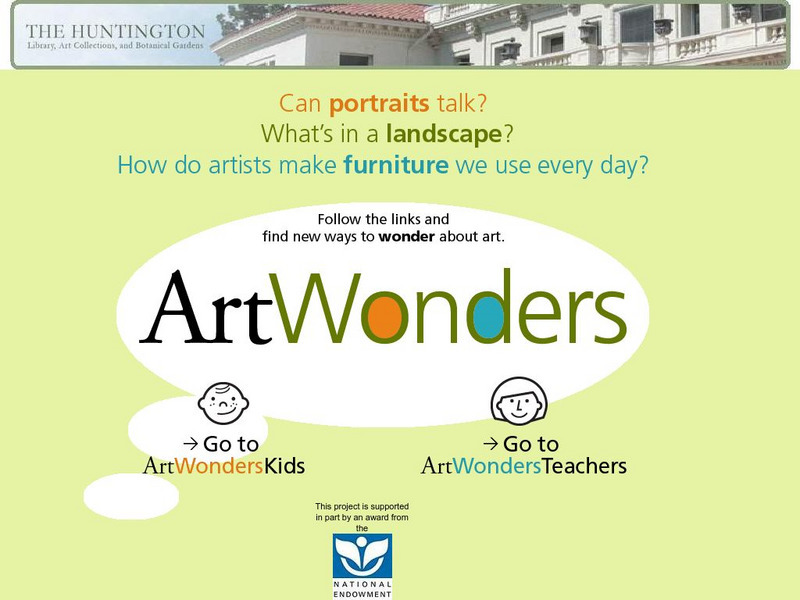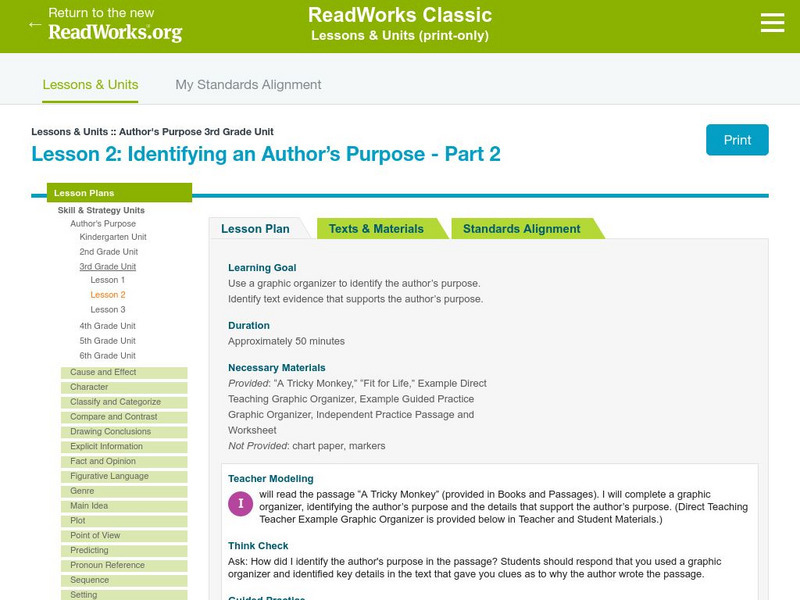West Virginia Department of Education
Technical Writing: Real-World Writing in the 21st Century
Wondering how to respond to the age-old question when will I ever use this? The answer is very simple when discussing technical writing. Teachers and administrators gain an understanding of using technical writing in the classroom....
National Gallery of Art
National Gallery of Art: The Elements of Art: Texture
Students will be introduced to one of the basic elements of art, texture, by identifying different types of textures found in multiple works of art and hypothesize what materials and techniques were used to achieve that texture. Then,...
Kinder Art
Kinderart: Daydreaming With Marc Chagall
The goal of this lesson is to explore the concepts of surrealism and early cubism that Chagall portrayed in his work. Students will create works of art inspired by artist Marc Chagall's painting I and the Village.
Read Works
Read Works: 3rd Grade: Lesson: Identifying Descriptive Language
[Free Registration/Login Required] With this lesson plan, 3rd graders can learn to identify descriptive language. Focused on the book "Mr. George Baker."
Huntington Library
Huntington Library: Art Wonders
Can portraits talk? What's in a landscape? How do artists make furniture? ArtWonders helps young learners ask and answer the kinds of questions that make observing art an interactive experience.
Free Reading
Free Reading: Make a Big Book of Rhymes: Identifying and Generating Rhyming Words
In this teacher-led activity on this site, students work together in the classroom creating a book full of rhymes.
National Gallery of Art
National Gallery of Art: Jackson Pollock
An exhibition that examines the many influences that Jackson Pollock absorbed before breaking with past traditions to create a new kind of abstraction. Beginning with Thomas Hart Benton, who was Pollock's first teacher, Pollock learned...
Read Works
Read Works: 3rd Grade: Author's Purpose: Lesson 2
[Free Registration/Login Required] This lesson plan helps students learn to identify an author's purpose.
Other
Art Class Curator: Looking at Art With Children: Why and How?
There is more to art than drawing well. This article lists tips on how to talk to your kids about art, especially breaking out a painting or sculpture from a museum, book, or the internet and leading a discussion with your kid about it.
PBS
Pbs Learning Media: Math + Arts: Symmetry, Reflective Drawing, and Totem Poles
In this lesson plan, students will create a colored pencil drawing utilizing symmetry and forms characteristic of Northwest Coast art and write a critique of their work. Media resources and teacher materials are included.
PBS
Pbs Learning Media: Math + Arts: Perspective Drawing
In this lesson plan, students use line segments, angles, and parallel and perpendicular lines in order to create a one point perspective drawing.
Kinder Art
Kinderart: Dripping Paint Action Painting
Students will look at the work of Jackson Pollock as they learn about Abstract Expressionism and Action Painting. They have the opportunity to make their own dripping paint "action" painting.
ArtsNow
Arts Now Learning: Using Movement and Dance to Explore Symmetry [Pdf]
In this lesson, 3rd graders first examine images and decide whether they are symmetrical or not. Next, they create individual symmetrical shapes with their bodies and identify the line of symmetry present during these shapes. They then...
ArtsNow
Arts Now Learning: Using Dance to Explore Electricity [Pdf]
After analyzing examples of conductors and insulators, 5th graders will work in small groups to craft a dance that depicts an electrical current and how it is affected by a conductor or insulator. Students will present their dances to...
PBS
Pbs Learning Media: Math + Arts: Geometric Quilts
In this lesson, students will create a class quilt of nine patch paper quilt blocks using geometry.
Brooklyn Museum
Brooklyn Museum: The Parts of an Exhibition Label [Pdf]
Go directly to the page in the Brooklyn Museum's "Teen Guide to Art" that illustrates the kind of information typically provided on the labels that identify artwork on exhibition at museums and galleries.
Other
Artsology: Hot Air Balloon Challenge
In a five-step challenge, this exercise involves identifying hot air balloon artists by their work and name. Once you guess the correct balloon by the artist, you advance to the next level.
Curated OER
Educational Technology Clearinghouse: Clip Art Etc: Morgan Dix
Morgan Dix (born November 1, 1827 in New York City; died April 29, 1908) was an American priest, "divine" (a theologian) and religious author. The son of John A. Dix and Catherine Morgan, he was educated at Columbia College and the...
Khan Academy
Khan Academy: The Artists Behind the Polychrome Sculpture
As part of an extensive research effort by the J. Paul Getty Museum into the design and construction of the polychrome sculpture Saint Gines de la Jara, researchers made an important distinction in identifying not just the artist who...
Other
Introduce Vocabulary: My School's a Zoo
A unique and flexible way to introduce vocabulary. The instructor introduces three new words to the class, then as the book My School's a Zoo by Stu Smith, is read, the students raise their hands when they hear the new words. The...
PBS
Pbs Teachers: Scientific American: Science Safari: The First People
Emulate the work of archaeologists in South Africa attempting to solve the riddles of human evolution by inferring a person's height from the length of one bone. Identify and communicate present-day rituals through ancient art techniques.
Library of Congress
Loc: Teachers: America at the Centennial
A lesson plan requiring student to analyze primary documents from the Philadelphia Centennial Exposition of 1876. Students interpret what these historical artifacts say "about the lives and values of Americans in 1876" among other things.








